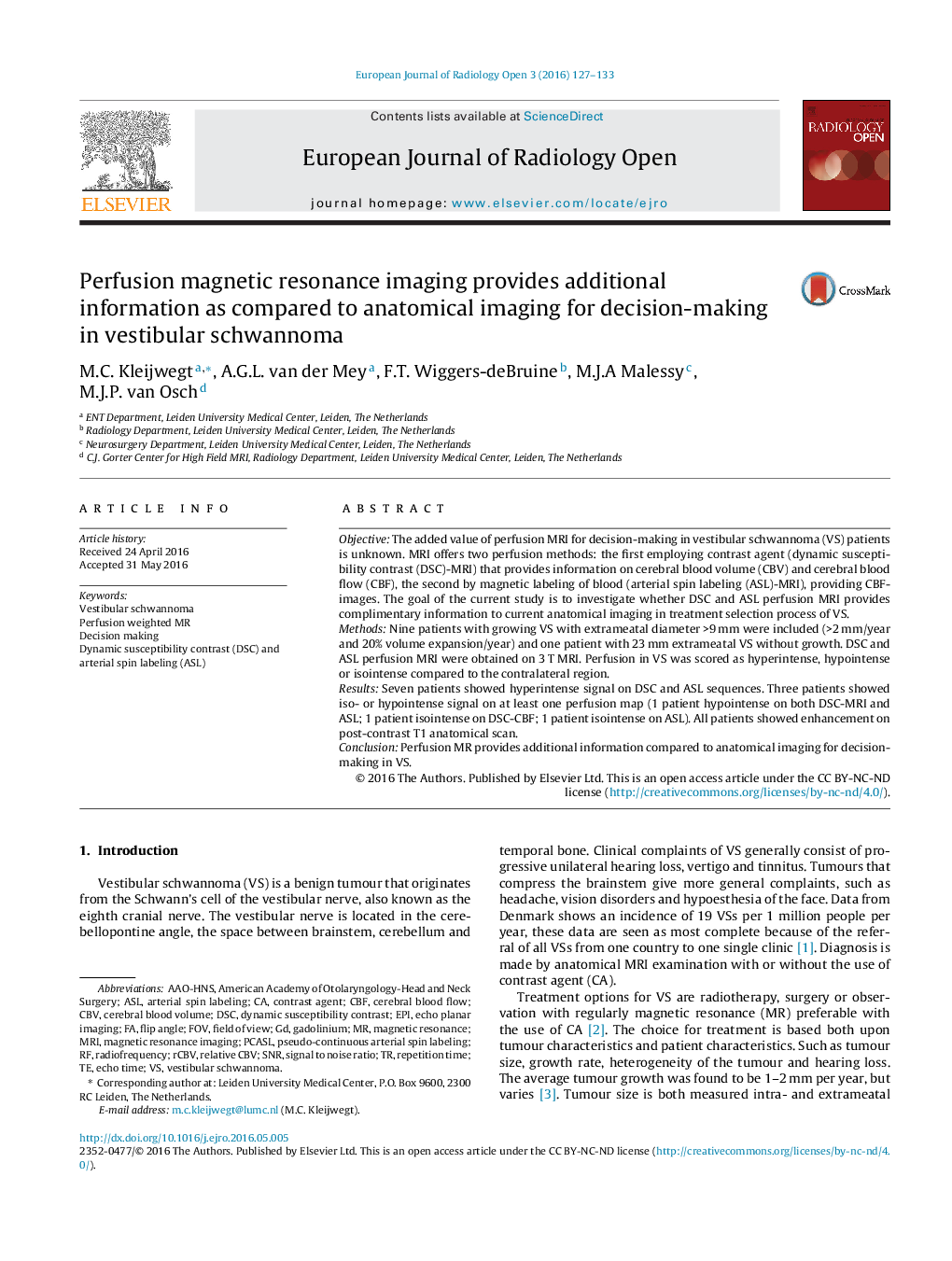| Article ID | Journal | Published Year | Pages | File Type |
|---|---|---|---|---|
| 4229664 | European Journal of Radiology Open | 2016 | 7 Pages |
•DSC/ASL-MRI can be acquired in growing VS with sufficient image quality.•In most patients DSC and ASL techniques provide similar qualitative scores.•These techniques can be of importance in future decision-making.
ObjectiveThe added value of perfusion MRI for decision-making in vestibular schwannoma (VS) patients is unknown. MRI offers two perfusion methods: the first employing contrast agent (dynamic susceptibility contrast (DSC)-MRI) that provides information on cerebral blood volume (CBV) and cerebral blood flow (CBF), the second by magnetic labeling of blood (arterial spin labeling (ASL)-MRI), providing CBF-images. The goal of the current study is to investigate whether DSC and ASL perfusion MRI provides complimentary information to current anatomical imaging in treatment selection process of VS.MethodsNine patients with growing VS with extrameatal diameter >9 mm were included (>2 mm/year and 20% volume expansion/year) and one patient with 23 mm extrameatal VS without growth. DSC and ASL perfusion MRI were obtained on 3 T MRI. Perfusion in VS was scored as hyperintense, hypointense or isointense compared to the contralateral region.ResultsSeven patients showed hyperintense signal on DSC and ASL sequences. Three patients showed iso- or hypointense signal on at least one perfusion map (1 patient hypointense on both DSC-MRI and ASL; 1 patient isointense on DSC-CBF; 1 patient isointense on ASL). All patients showed enhancement on post-contrast T1 anatomical scan.ConclusionPerfusion MR provides additional information compared to anatomical imaging for decision-making in VS.
